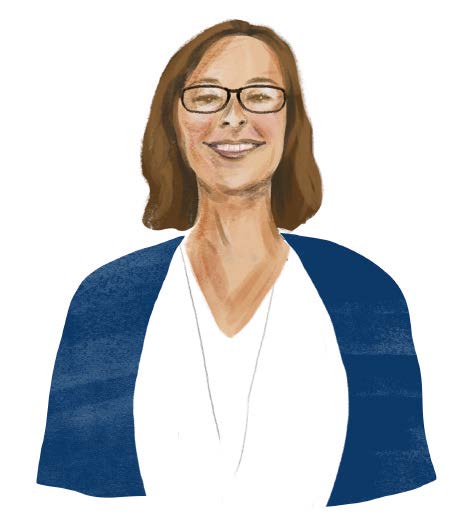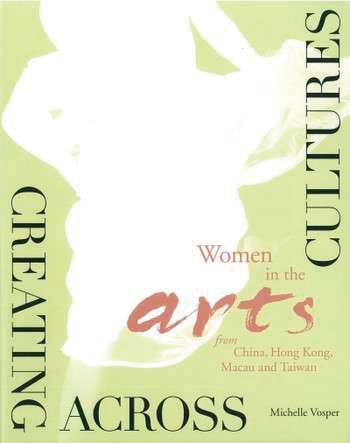"These courageous women often had to defy cultural expectations in order to heed their artistic drive. Their artworks delve into the social realities of their times, and their personal stories provide an intimate portrait of the historical trajectory of Greater China over three generations."
They are 16 women, all artists, all visionaries. Thanks to their achievements in a world predominantly dominated by male artists, this group of females is portrayed as unique exemplars of the contemporary arts scenario in China. In Creating Across Cultures: Women in the arts from China, Hong Kong, Macau, and Taiwan, American editor Michelle Vosper connects diverse lives and talents with a thread holding these artists together: their gender.
This recently launched book can be seen as a sort of introductory guide to the vibrant contemporary arts panorama of Greater China. It also reveals a lot more than just some views and achievements related to the arts universe. Their personal histories reveal a glimpse into the larger, historical trajectory of the region over three generations, while their artworks delve into social realities and challenges of the day.
The 360-page, hardback book also sheds a light into a region of surprisingly diverse cultures despite their geographical proximity. The essays edited by Vosper are written by journalists, scholars, and artists, and were based on in-depth interviews and professional archives. These 16 women were born between the years of 1925 and 1979, and is assumed that their talents in art, dance, literature, music, and theater have profoundly shaped contemporary aesthetic, cultural, and social discourses in Greater China.
The book’s organization is quite loose and avoids grouping artists according to their geographical locations or cultural distinctions. It would be quite reductive to categorize these artists’ work based on their places of origin, partly because some of them have emigrated around the region and their cultural and educational influences have been multifold. For instance, Nieh Hualing moved from China to Taiwan to the United States; Candace Chong’s family moved from the Mainland to Hong Kong; Wang Xinxin, at one time, relocated from the Mainland to Taiwan.
So, their artistic genre is the logical line that guides the readers throughout these portraits. The first part, “Women of Words,” groups literary artists; the second, “World of the Visual,” features artists across the realm, including installation and multimedia work, photography and filmmaking; “Sound and Stage,” is devoted to the performing arts, including music and theater performance; and the last part, “Language of Dance,” includes pioneers and performers of modern dance.
Macao is represented by Bun Ching Lam (林品晶), who has had a steady set of commissions from the Macao Orchestra to write pieces that reflect the city. The composer started studying piano at the age of seven and gave her first public solo recital at 15. In 1976, she received a B.A. degree in piano performance from the Chinese University of Hong Kong. In 1981, Bun Ching Lam was awarded a Ph.D. from the University of California at San Diego. In the same year, she was invited to join the music faculty of the Cornish College of the Arts in Seattle, where she taught until 1986. The Macao-born artist is one of a growing number of Chinese women composers who are active on the international stage. She is a passionate student of Chinese art, literature and aesthetics. Lam’s music is beyond East or West, dissolving boundaries to become an art that is truly representative of today’s interconnected world.
Like most artists around the world, these women delve into issues that are at the nexus of intellectual discussion, politics, culture and societal change. Hong Kong playwright Candace Chong(莊梅岩)presents a nuanced view of social controversies in her hometown, while Yin Xiuzhen(尹秀珍), a conceptual artist, discusses the impact of rapid urbanization, which in her opinion weakens human connections and damages the nature.
Yang Lina(楊荔鈉), an award-winning filmmaker based in Beijing, is a pioneer among contemporary Chinese directors; her unflinching documentaries have illuminated the plights of China’s marginalized, including women, children and the elderly. Pisui Ciyo(碧斯蔚)was born into the Atayal tribe in Taiwan and has become an award-winning choreographer, performer and educator. Her works of multimedia dance theater combine traditional indigenous art forms with Spanish Flamenco and modern performance art to create an expression of the contemporary indigenous artist.
Other artists profiled include Nieh Hualing(聶華苓), writer; Liao Wen(廖雯), art critic and curator; Choi Yan Chi(蔡仞姿), artist and educator; Lulu Hou(侯淑姿), photographic artist; Jaffa Lam(林嵐), installation artist; Wang Xinxin(王心心), Nanguan performer; Tian Mansha(田蔓莎), Sichuan Opera performer; Wu Na(巫娜), guqin musician; Yang Meiqi(楊美琦), modern dance pioneer; Mui Cheuk Yin(梅卓燕), dancer/choreographer; and Wen Hui(文慧), dancer/choreographer.
This book, while far from complete, is a humble attempt to begin to rectify the imbalance and bring Chinese female artists to light in English. Their tales are as exhilarating as their art, shown and described herein, is brilliantly provocative.
The essay authors include Liza Bielby, Christina Yuen Zi Chung, Samantha Culp, Valerie C. Doran, Jennifer Feeley, Georg Kochi, Tina Li Ying Ma, Terry O’Reilly, Ralph Samuelson, Clare Tyrrell-Morin, and Sasha Su-Ling Welland.



